iPhone 12 vs iPhone 12 mini vs iPhone 12 Pro vs iPhone 12 Pro Max
Four new iPhones that are all quite different

Apple has launched more new iPhones than ever this year, unveiling four new models in the iPhone 12 mini, iPhone 12, iPhone 12 Pro, and iPhone 12 Pro Max.
With all that choice, you might be wondering exactly how the four phones differ, and that's where this article comes in. Below you'll find a comparison of the specs, design, and features of all four models, so you can see what they have in common and what they don't.
We've also included pricing for all four iPhone 12 models, so you can see at a glance how much you'll have to shell out for each.
- iPhone 12: all you need to know
- iPhone 12 mini: all the facts on the smaller model
- iPhone 12 Pro duo: everything you could possibly want to find out
Design
The four iPhone 12 models all look quite similar, with a front that's mostly all screen but with a large notch at the top, a metal frame (stainless steel for the Pro models and aluminum for the others), and a glass back, with a large camera block in the top left corner.
They're also all IP68 certified, with water resistance to a depth of up to 6 meters for up to 30 minutes.
The main differences between them then is their sizes, weights, and colors. In terms of colors, the iPhone 12 mini and iPhone 12 come in black, blue, green, red, and white shades, while the iPhone 12 Pro and iPhone 12 Pro Max are going on sale in pacific blue, gold, graphite, and silver colors.
So the Pro models are more understated, while the standard iPhone 12 and iPhone 12 mini are more colorful – unless you buy them in black.
Sign up for breaking news, reviews, opinion, top tech deals, and more.
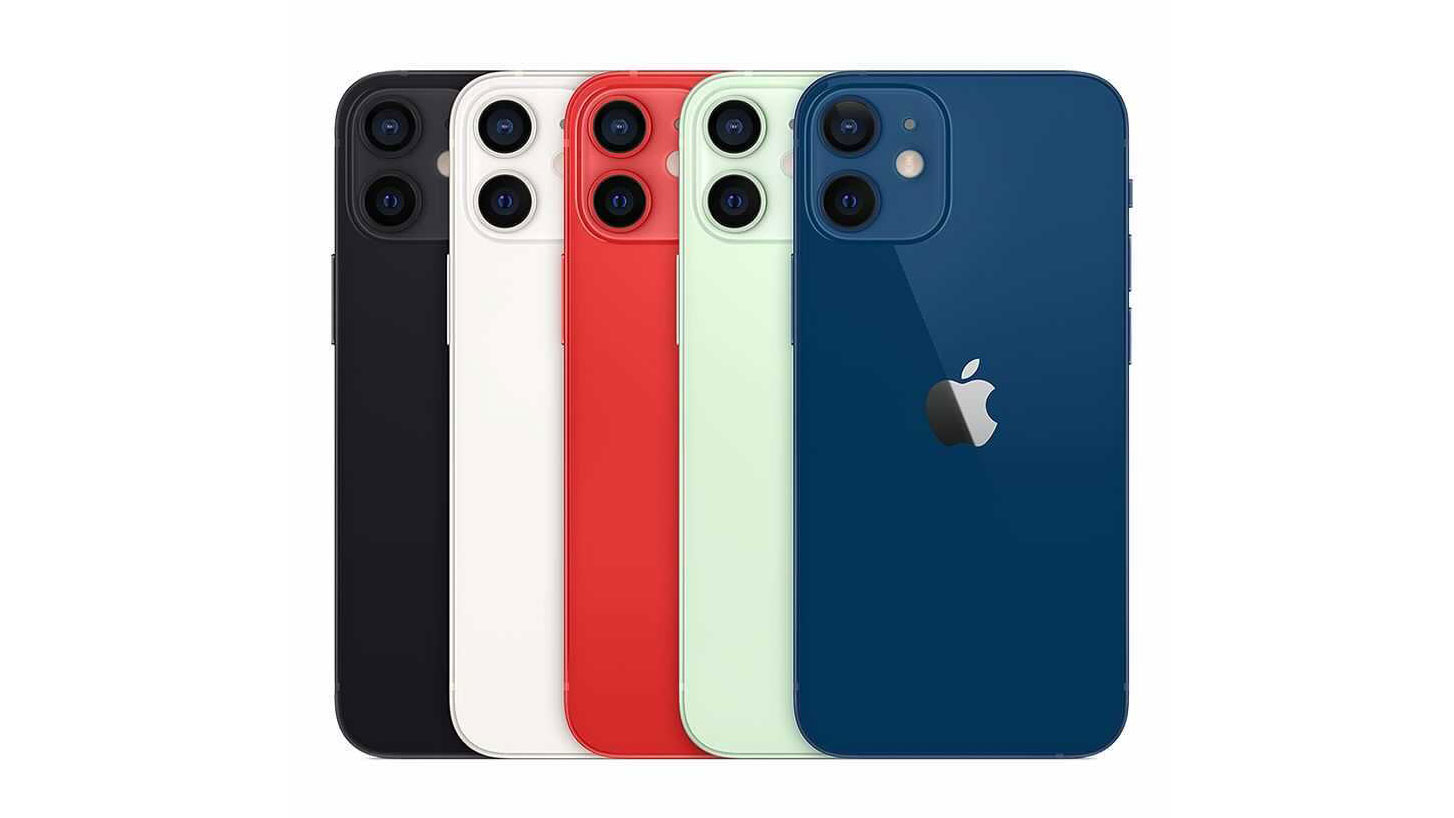
As for the weight and dimensions, the iPhone 12 mini is 131.5 x 64.2 x 7.4mm and 133g, the iPhone 12 is 146.7 x 71.5 x 7.4mm and 162g, the iPhone 12 Pro is 146.7 x 71.5 x 7.4mm and 187g, and the iPhone 12 Pro Max is 160.8 x 78.1 x 7.4mm and 226g.
So the phones get progressively bigger and heavier as you’d expect, but they’re all the same thickness, and the iPhone 12 and iPhone 12 Pro have the same dimensions, the latter just weighs more.
The four phones also all have a tough 'Ceramic Shield' front.
| Header Cell - Column 0 | iPhone 12 mini | iPhone 12 | iPhone 12 Pro | iPhone 12 Pro Max |
|---|---|---|---|---|
| Size (mm) | 131.5 x 64.2 x 7.4 | 146.7 x 71.5 x 7.4 | 146.7 x 71.5 x 7.4 | 160.8 x 78.1 x 7.4 |
| Weight | 133g | 162g | 187g | 226g |
| IP Rating | IP68 | IP68 | IP68 | IP68 |
Screen
One of the biggest things you’ll need to decide with the iPhone 12 range is what size screen you want, as there are three very different options to choose from.
The smallest is the iPhone 12 mini, which comes in at 5.4 inches, and a resolution of 1080 x 2340 for 476 pixels per inch.
Then there’s the iPhone 12 and iPhone 12 Pro, which are both 6.1 inches and 1170 x 2532 with 460 pixels per inch, and finally the iPhone 12 Pro Max at 6.7 inches, 1284 x 2778, and 458 pixels per inch.
All four phones have an OLED screen too, so they’re very similar in tech and pixel density, with the size being the main difference.
| Header Cell - Column 0 | iPhone 12 mini | iPhone 12 | iPhone 12 Pro | iPhone 12 Pro Max |
|---|---|---|---|---|
| Size | 5.4-inch | 6.1-inch | 6.4-inch | 6.7-inch |
| Resolution | 2340 x 1080 | 2532 x 1170 | 2532 x 1170 | 2778 x 1284 |
| Pixels Per Inch | 476ppi | 458ppi | 436ppi | 458ppi |
| Max Brightness (typical) | 625 nits | 625 nits | 800 nits | 800 nits |
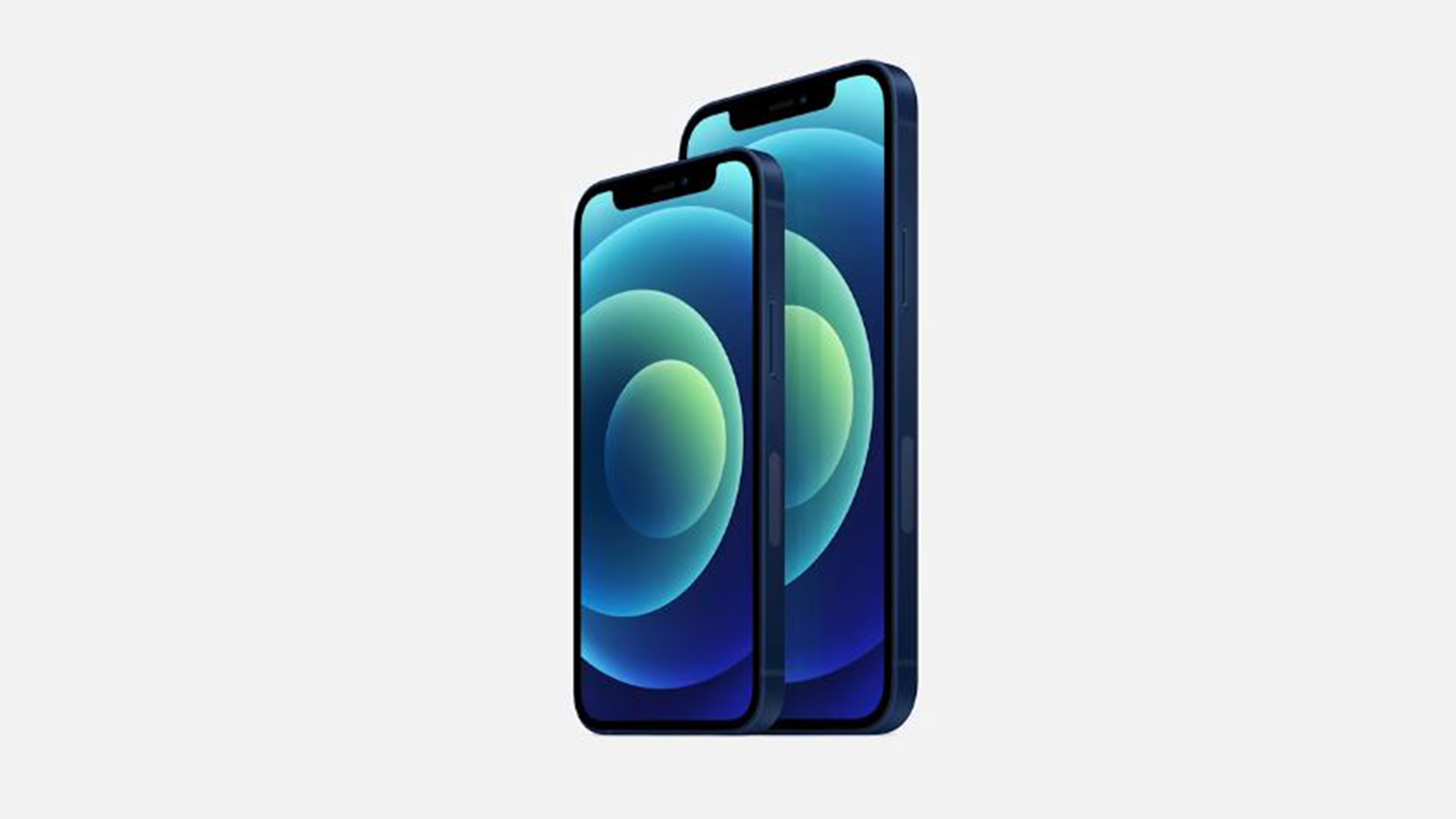
Camera
The iPhone 12 and iPhone 12 mini both have a dual-lens rear camera, with a 12MP f/1.6 main sensor and a 12MP f/2.4 ultra-wide one, offering a 120-degree field of view. They also sport optical image stabilization (OIS) on the main lens.
The iPhone 12 Pro and iPhone 12 Pro Max though have a triple-lens camera, with the same two lenses as above, joined by a telephoto.
The telephoto camera has a f/2.0 aperture on the iPhone 12 Pro and allows for up to 4x optical zoom range, while on the iPhone 12 Pro Max the telephoto camera has an f/2.2 aperture and a 5x optical zoom range.
These two models also have a LiDAR (Light Detection and Ranging) scanner, for improved augmented reality and low light performance.
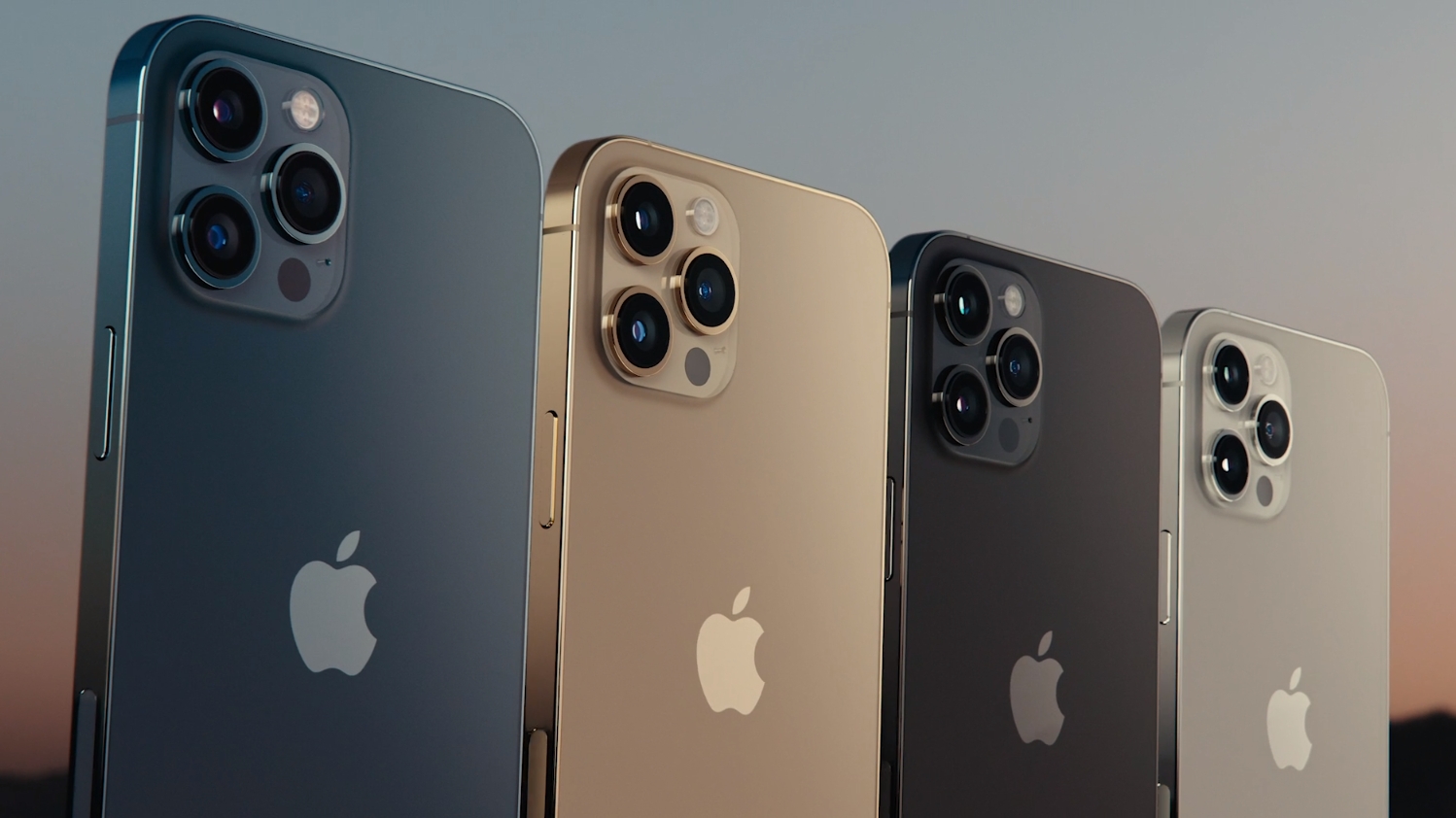
With all this upgraded camera hardware, the iPhone 12 Pro and iPhone 12 Pro Max also have some features and modes that the cheaper models lack, such as ProRAW, which combines the versatility of shooting in RAW with Apple’s computational photography.
On the front meanwhile there’s a 12MP f/2.2 camera on all four phones, and they can all record video in up to 4K quality at up to 60fps. However, while they can all also record in Dolby Vision, the iPhone 12 Pro and Pro Max can do this at up to 60fps, while the iPhone 12 and iPhone 12 Mini can only manage it at up to 30fps.
| Header Cell - Column 0 | iPhone 12 mini | iPhone 12 | iPhone 12 Pro | iPhone 12 Pro Max |
|---|---|---|---|---|
| Rear Cameras | 12MP + 12MP | 12MP + 12MP | 12MP + 12MP + 12MP | 12MP + 12MP + 12MP |
| Ultra Wide | ƒ/2.4 aperture | ƒ/2.4 aperture | ƒ/2.4 aperture | ƒ/2.4 aperture |
| Wide | ƒ/1.6 aperture | ƒ/1.6 aperture | ƒ/1.6 aperture | ƒ/1.6 aperture |
| Telephoto | - | - | ƒ/2.0 aperture | ƒ/2.2 aperture |
| Digital Zoom | up to 5x | up to 5x | up to 10x | up to 12x |
| Front Camera | 12MP, ƒ/2.2 aperture | 12MP, ƒ/2.2 aperture | 12MP, ƒ/2.2 aperture | 12MP, ƒ/2.2 aperture |
| LiDAR Scanner | No | No | Yes | Yes |
Battery life
Apple never reveals the size of the batteries in its phones, so that’s something that we’ll have to wait for a teardown to learn, but it has said that the iPhone 12 mini can keep going for up to 15 hours of video playback, while the iPhone 12 and iPhone 12 Pro can manage up to 17 hours, and the iPhone 12 Pro Max up to 20 hours.
They also all support fast charging at up to 20W (though fast chargers are sold separately), and they support wireless charging.
They all feature MagSafe too, which uses magnets to ensure wireless charging pads are correctly aligned, and also opens the door to new accessories.
| Header Cell - Column 0 | iPhone 12 mini | iPhone 12 | iPhone 12 Pro | iPhone 12 Pro Max |
|---|---|---|---|---|
| Video Playback | up to 15 hours | up to 17 hours | up to 17 hours | up to 20 hours |
| Video Playback (streamed) | up to 10 hours | up to 11 hours | up to 11 hours | up to 12 hours |
| Audio Playback | up to 50 hours | up to 65 hours | up to 65 hours | up to 80 hours |
Specs and features
All four of the iPhone 12 models are equipped with the A14 Bionic chipset. This is Apple’s latest and greatest mobile chipset, though it’s not totally new as we’ve already seen it in the iPad Air 4 (2020).
In any case, it’s a top-end chipset that should rival or beat any Android chipset, as well as being a step up from the A13 Bionic in the iPhone 11 range.
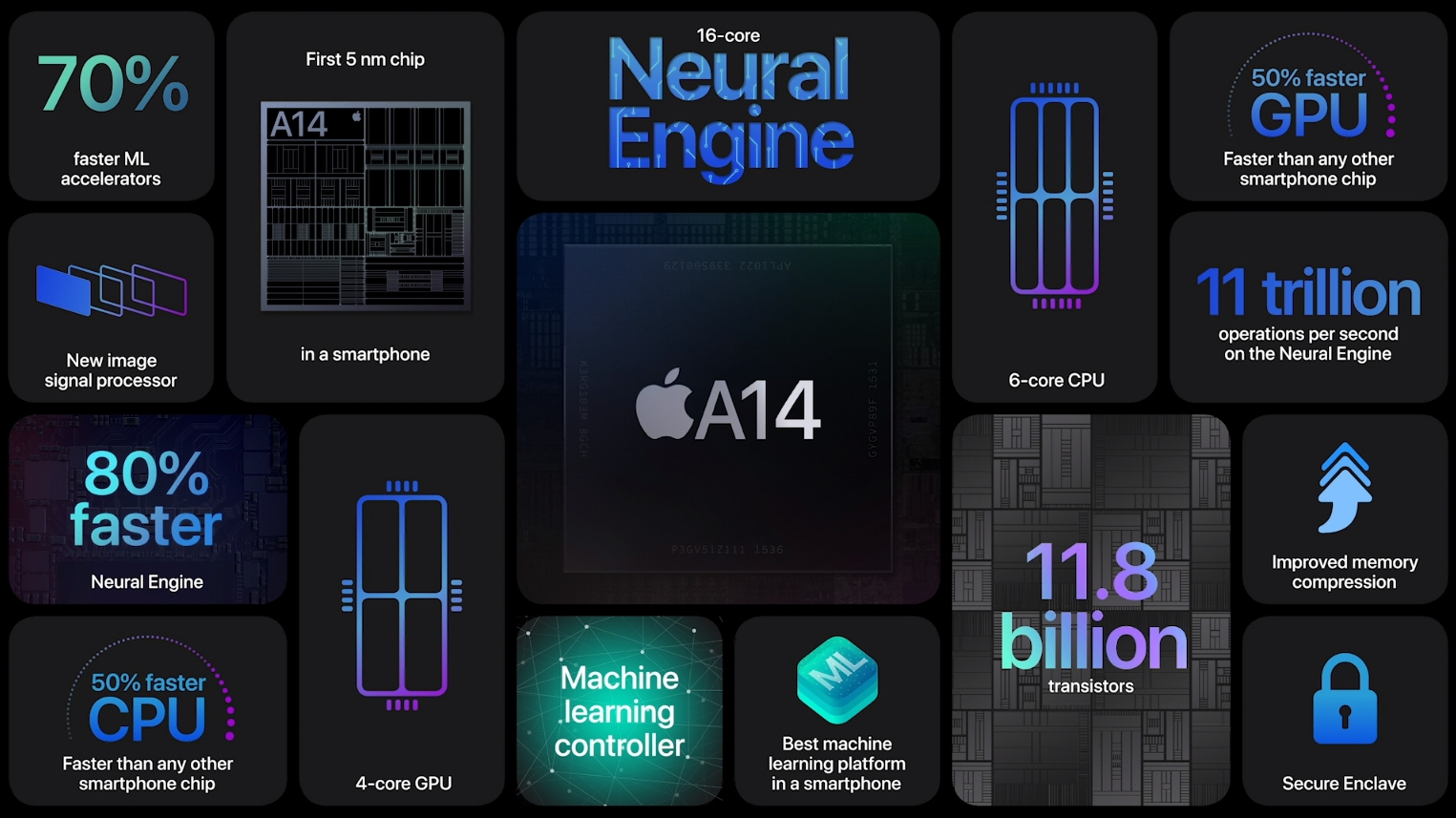
Apple hasn’t said how much RAM its new phones have, but pre-release rumors strongly suggested that the Pro models would have 6GB while the others would have 4GB. As with battery capacity though we’ll have to wait for a teardown to know for sure. All four phones also support 5G, making them the first iPhones to do so.
As for storage, there’s a choice of 64GB, 128GB, or 256GB in the iPhone 12 and iPhone 12 mini, with the iPhone 12 Pro and iPhone 12 Pro Max coming in 128GB, 256GB, and 512GB configurations.
All four phones also run iOS 14 of course, and offer Face ID.
Price and availability
None of Apple’s new phones are cheap, but some cost a lot more than others. The iPhone 12 mini is the cheapest, starting at $699 / £699 / AU$1,199 for 64GB of storage, and rising to $749 / £749 / AU$1,279 for 128GB and $849 / £849 / AU$1,449 for 256GB.
The iPhone 12 is next up, coming in at $799 / £799 / AU$1,349 for 64GB of storage, $849 / £849 / AU$1,429 for 128GB, and $949 / £949 / AU$1,599 for 256GB.
Then there’s the iPhone 12 Pro, which is $999 / £999 / AU$1,699 for 128GB of storage, $1,099 / £1,099 / AU$1,869 for 256GB, and $1,299 / £1,299 / AU$2,219 for 512GB.
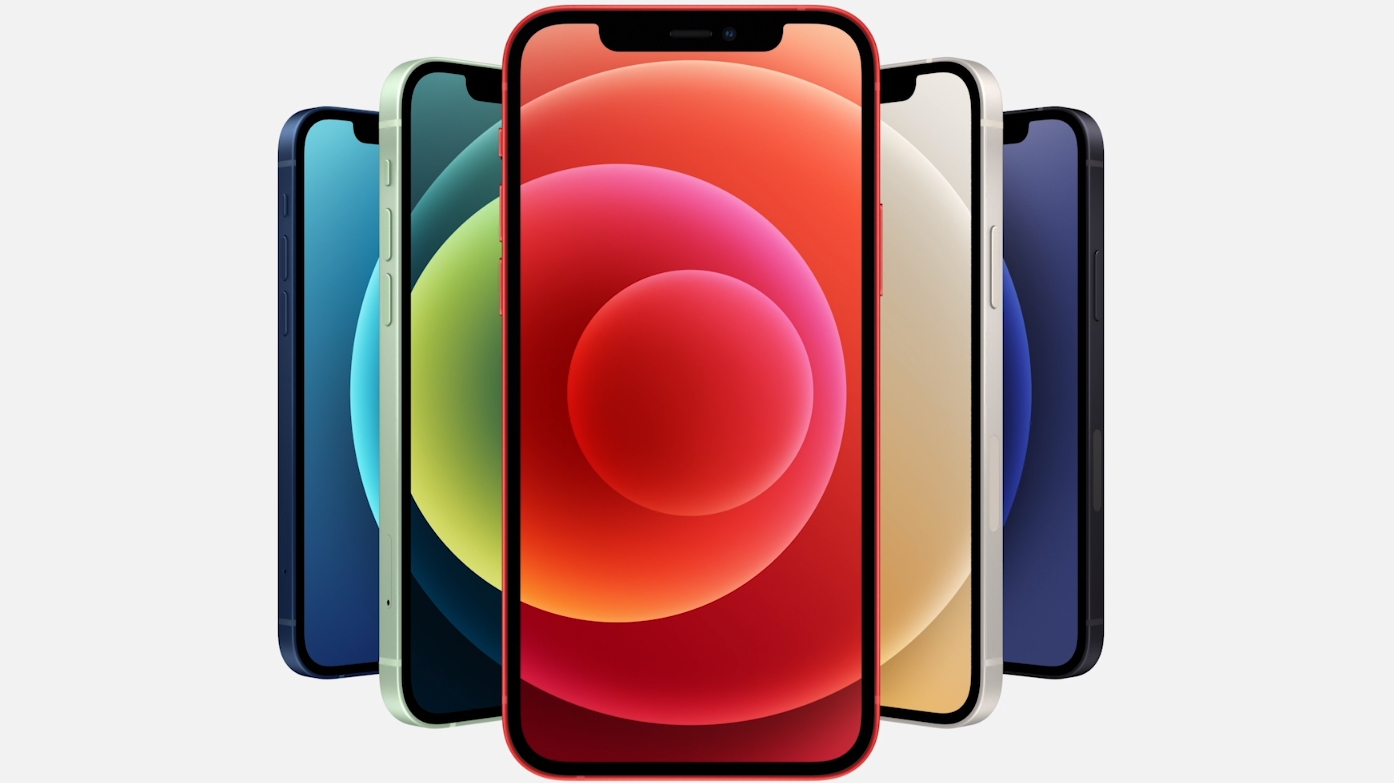
Finally, the priciest model is the iPhone 12 Pro Max, at $1,099 / £1,099 / AU$1,849 for 128GB, $1,199 / £1,199 / AU$2,019 for 256GB, and $1,399 / £1,399 / AU$2,369 for 512GB.
As for availability, the iPhone 12 and iPhone 12 Pro are up for pre-order now, and they hit stores on October 23, while the iPhone 12 Mini and iPhone 12 Pro Max arrive a little later, with pre-orders opening on November 6, and a release date of November 13.
Takeaway
The iPhone range has never looked bigger, and between these four new phones there’s a good chance you’ll find one that’s the right fit.
The iPhone 12 Mini is the smallest and cheapest, but also has the worst battery life. Then there’s the iPhone 12 and iPhone 12 Pro, which are the same size as each other, but the latter has more camera lenses and features, among other tweaks, such as a stainless steel rather than aluminum frame.
Then at the top end there’s the iPhone 12 Pro Max, which has the biggest screen, the best cameras, and the longest battery life, paired with the highest price.
We’ll be putting all these phones through full reviews, so you might want to wait for our verdict before making your choice, but if you’re an iPhone fan you probably won’t go too wrong with any of them.
James is a freelance phones, tablets and wearables writer and sub-editor at TechRadar. He has a love for everything ‘smart’, from watches to lights, and can often be found arguing with AI assistants or drowning in the latest apps. James also contributes to 3G.co.uk, 4G.co.uk and 5G.co.uk and has written for T3, Digital Camera World, Clarity Media and others, with work on the web, in print and on TV.